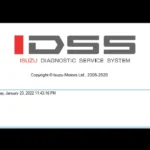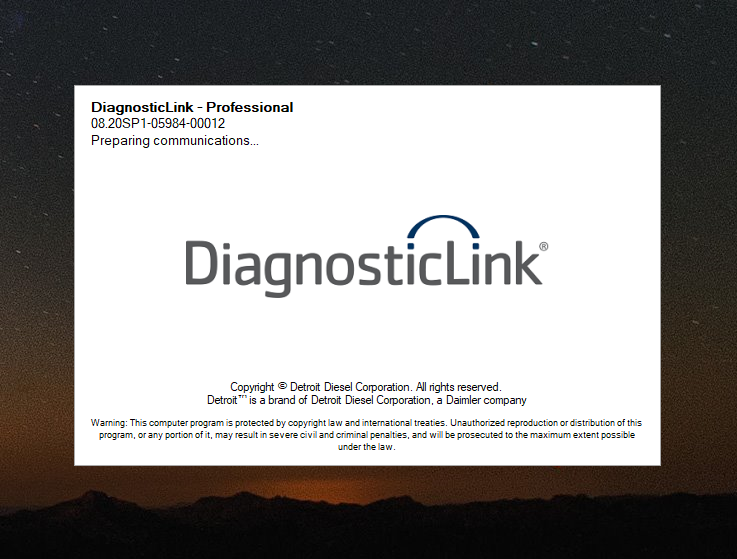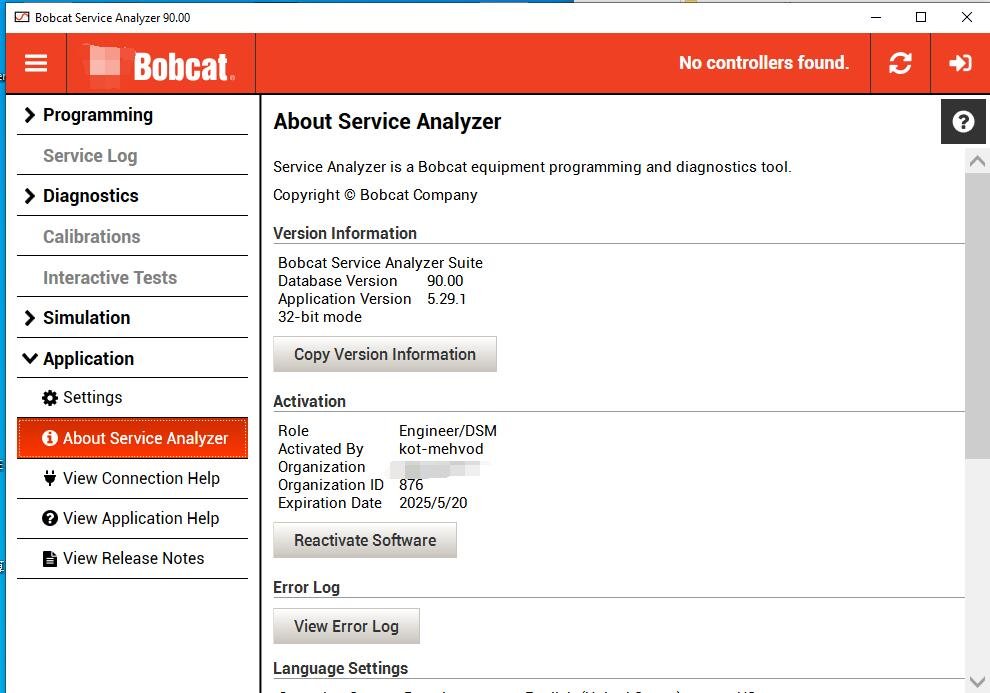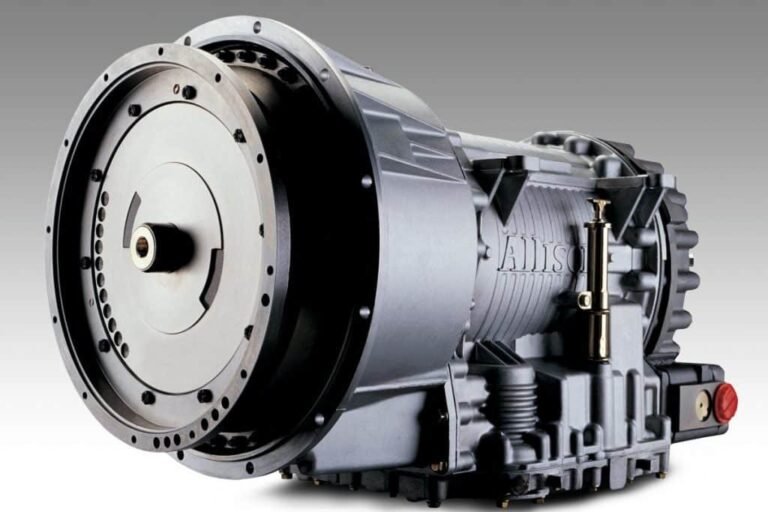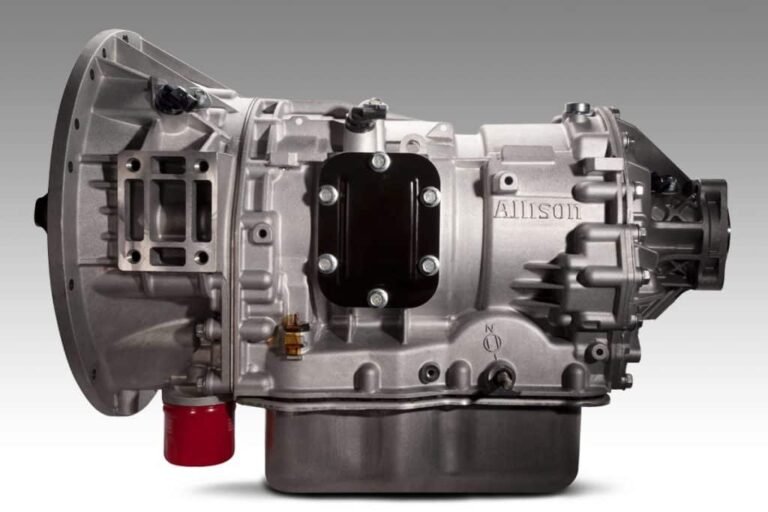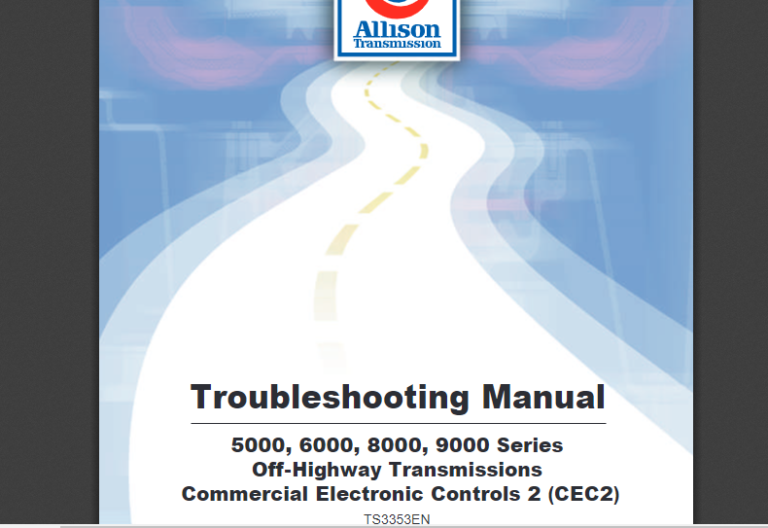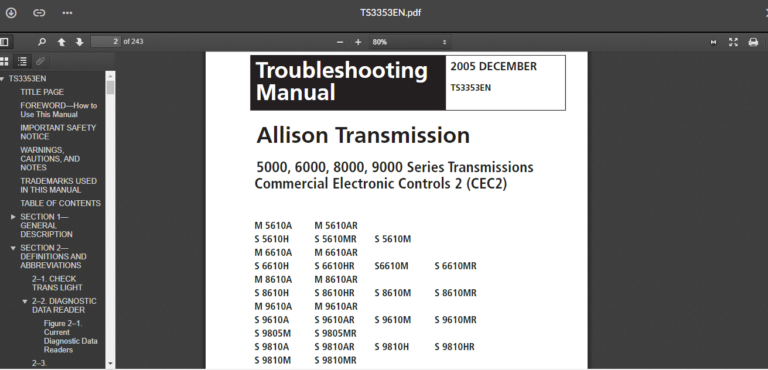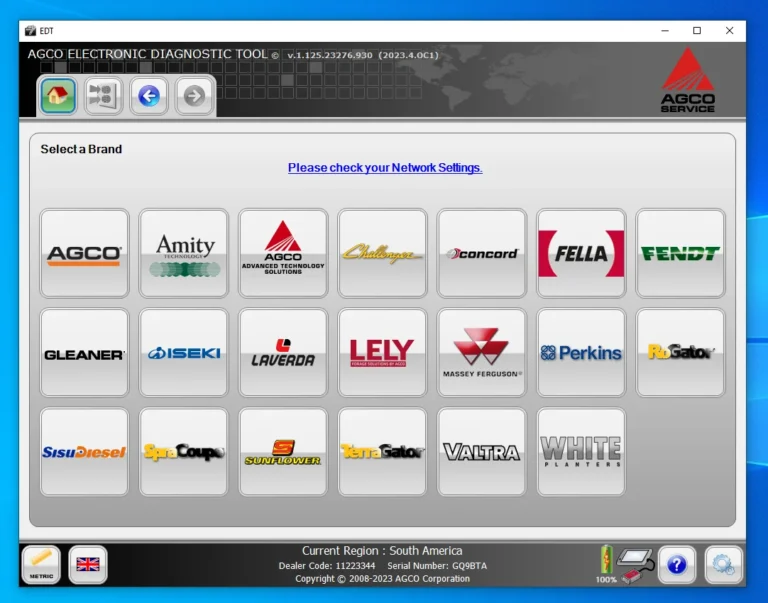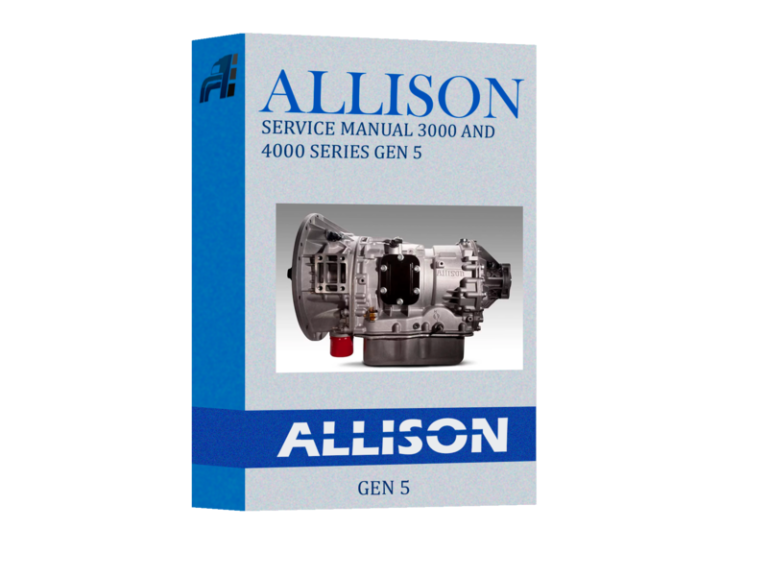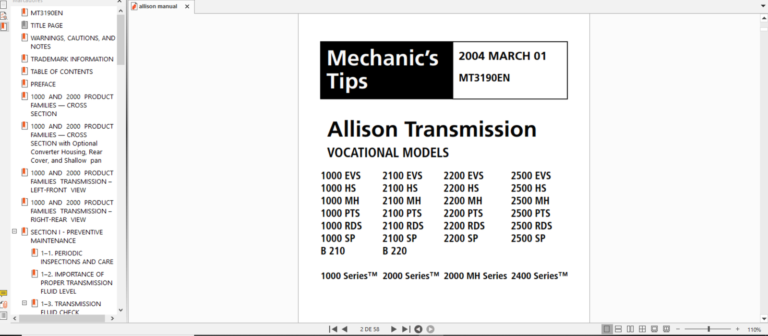DOOSAN EDIA TRUCK STANDARD 2.4.0.7 [2023.06]: Enhance Your Heavy Machinery Diagnostics Today!
The DOOSAN EDIA TRUCK STANDART 2.4.0.7 [2023.06] , released in 2023, is a vital tool for diagnosing and maintaining heavy machinery. It offers advanced features crucial for optimizing operational efficiency and minimizing downtime. This software is designed to support various systems and provides real-time diagnostics for multiple types of equipment. Additionally, it includes remote installation support via TeamViewer to ensure a smooth setup process.
Table of Contents
ToggleOverview of Doosan Edia Truck Standard 2.4.0.7 2023.06
The Doosan Edia Truck Standard 2.4.0.7 is a cutting-edge diagnostic software specifically designed for heavy machinery. It plays a crucial role in modern maintenance strategies by providing fast and precise analysis of machinery performance. This version, released in 2023, brings significant enhancements that elevate operational efficiency.
Users benefit from a user-friendly interface that allows for seamless navigation through its features. The software supports real-time diagnostics, enabling technicians to identify and address issues promptly, thereby minimizing downtime. Importantly, real-time updates keep the tool aligned with the latest technological advancements.
- Intuitive dashboard for easy access to diagnostics
- Comprehensive technical data for various machine models
- Regular software upgrades without additional costs
This software is compatible with the latest Windows operating systems, ensuring a broad range of accessibility for users across different machines. The developments in version 2.4.0.7 reflect a commitment to innovation, reinforcing Doosan’s position as a leader in the heavy machinery sector.
Development and Origins
The Doosan Edia Truck Standard 2.4.0.7 emerged from the innovative efforts of Doosan, a renowned entity in the heavy machinery sector. Established in South Korea, Doosan has a legacy of producing cutting-edge equipment and solutions tailored for construction and industrial operations.
This software version, launched in 2023, reflects significant advancements in diagnostics technology, designed to meet the growing demands of modern heavy machinery. The development process involved extensive research and feedback from industry professionals to ensure that the features and functionalities align with the practical needs of users.
- The software’s design emphasizes user-friendliness, facilitating easy navigation and operation for technicians.
- Robust technical support accompanies the software, further enhancing its value to users.
- Continuous updates are integrated into the software, ensuring it remains relevant amid technological advancements.
Doosan’s commitment to innovation and quality is evident in the creation of the Edia Truck Standard. The purpose of this tool is not only to provide diagnostic capabilities but also to optimize the operational efficiency of heavy machinery. Consequently, companies utilizing this software can expect improved performance and reduced downtime.
Technical specifications provide crucial details about the system requirements and features of the Doosan Edia Truck Standard 2.4.0.7. Understanding these specifications is essential for ensuring compatibility and optimal performance.
Technical Specifications
File Size and Installation
File Size
The Doosan Edia Truck Standard 2.4.0.7 has a compact file size of 10.5 MB. This lightweight structure ensures quick downloads and efficient use of storage space on user devices.
Installation Size and Requirements
Upon installation, the software occupies approximately 20 MB of disk space. This installation requirement is designed to facilitate smooth operation while minimizing the footprint on system resources.
Software License
License Duration
The software is offered with an unlimited time license, allowing users to access its full range of functionalities without worrying about expiration or renewal fees. This aspect significantly enhances the cost-efficiency of investment in this product.
License Terms and Conditions
Users are required to agree to specific terms and conditions when purchasing the software. These terms typically encompass usage rights, restrictions, and guidelines for customer support, ensuring an understanding of the software’s proper use.
Supported Operating Systems
Windows 10 (64 bits)
The Doosan Edia Truck Standard 2.4.0.7 is compatible with Windows 10 (64 bits), providing users with reliable performance on one of the most widely used operating systems in professional environments.
Windows 11 (64 bits)
This software also supports Windows 11 (64 bits), ensuring that users with the latest operating system can fully benefit from its advanced diagnostic capabilities and features without any compatibility issues.
Language Support
Interface Language
The user interface of the Doosan Edia Truck Standard 2.4.0.7 is available in English. This ensures that the software is accessible to a wide range of users, maximizing usability and ease of navigation.
Database Language
The technical database provided by the software is also in English, allowing users to access crucial diagnostic information and technical data seamlessly. This consistent language support enhances user experience and minimizes confusion.
Key Features of Doosan Edia Truck Standard
The Doosan Edia Truck Standard is packed with essential features that enhance diagnostics and maintenance for heavy machinery, ensuring efficient operation. Below are key functionalities that define this software solution.
Real-Time Diagnostics
One of the standout features of the Doosan Edia Truck Standard is its capability for real-time diagnostics. This function allows users to monitor equipment performance continuously, identifying issues as they arise. With immediate feedback on machinery health, operators can proactively address concerns, reducing the likelihood of unexpected breakdowns.
Access to Technical Data
The software provides comprehensive access to technical data specific to various models of heavy machinery. This feature is vital for maintenance teams and technicians who need precise information to troubleshoot effectively. Users can refer to technical specifications, wiring diagrams, and more, ensuring they have everything necessary at their fingertips.
Fault Code Reset Tools
Managing fault codes is crucial for maintenance and operations. The Doosan Edia Truck Standard includes integrated tools that allow users to reset fault codes once issues are resolved. This capability not only streamlines operations but also assists in ensuring that the machinery can return to service without lingering error messages that may hinder performance.
Detailed Reporting
Generating detailed reports is essential for tracking the performance and condition of equipment over time. The software offers robust reporting features that can be customized based on user preferences. These reports provide insights into machine usage, fault history, and maintenance needs, enabling informed decision-making for operational efficiency.
Regular Updates
The Doosan Edia Truck Standard is designed to stay at the forefront of technology through regular updates. Users benefit from continuous improvements and new functionalities that enhance the performance and compatibility of the software. These updates are typically automatic, ensuring that operators always have access to the latest tools and features without extensive manual intervention.
Importance in Heavy Machinery Industry
The heavy machinery industry relies heavily on precise diagnostics and efficient maintenance solutions. Advanced software tools are crucial for optimizing performance and minimizing operational downtime. Accurate detection of equipment issues prevents costly repairs and ensures that machinery operates at peak efficiency.
In today’s fast-paced environment, the ability to diagnose problems swiftly can significantly impact productivity. Companies that utilize effective diagnostic tools can avoid prolonged periods of inactivity, which can lead to reduced operational efficiency and lost revenue. The rapid identification and resolution of faults enable organizations to maintain their competitive edge.
- Minimizing downtime through rapid issue identification.
- Enhancing maintenance strategies with real-time data.
- Reducing operational costs by preventing major breakdowns.
Moreover, as industries continue to evolve, the growing emphasis on automated and digital solutions means that incorporating sophisticated diagnostic tools has become more than just beneficial; it is now essential. These tools not only address current challenges but also prepare companies for future technological advancements.
In summary, the significance of robust diagnostic software in the heavy machinery sector cannot be underestimated. Its role in ensuring reliable performance and supporting proactive maintenance practices contributes directly to operational success.
Competitive Advantages
The Doosan Edia Truck Standard 2.4.0.7 offers several competitive advantages that distinguish it from other diagnostic software in the market. These advantages enhance operational efficiency and provide long-term benefits for businesses utilizing heavy machinery.
Cost Savings
Implementing this software leads to significant cost savings for organizations. By accurately diagnosing issues before they escalate into major repairs, companies can prevent costly downtime. The software’s ability to forecast maintenance needs allows for budget-friendly planning, ultimately resulting in reduced repair and maintenance costs.
Ease of Use
The user-friendly interface of the Doosan Edia Truck Standard ensures that both experienced technicians and newcomers can navigate it with minimal training. The intuitive design streamlines the diagnostics process, allowing users to focus more on troubleshooting and less on learning how to operate the tool. This efficiency translates to quicker resolutions and higher productivity on the job site.
Versatility
One of the standout features of this software is its versatility across various models and types of heavy machinery. Unlike other diagnostic tools that may cater to specific equipment or brands, Doosan Edia Truck Standard supports a wide range of machinery, making it a valuable asset for diverse fleets. This adaptability helps businesses manage multiple assets with a single software solution.
Regular Software Updates
Regular updates are critical in the fast-paced technology landscape. The Doosan Edia Truck Standard 2.4.0.7 provides users with ongoing software enhancements and updates, ensuring that they have access to the latest diagnostics tools and information. This commitment to continuous improvement helps maintain the software’s relevance and efficacy in diagnosing current machinery issues.
Comparison with Other Diagnostic Software
The heavy machinery diagnostics landscape is highly competitive, with numerous software options available in the market. This section explores how Doosan Edia Truck Standard 2.4.0.7 stacks up against other leading diagnostic tools.
Noregon JPROZZ vs. Doosan Edia
Noregon JPROZZ is known for its comprehensive fleet management capabilities. It provides in-depth diagnostic functions tailored for a vast array of commercial vehicles, including trucks and buses. By comparing Noregon JPROZZ with Doosan Edia, several key aspects emerge:
- Target Audience: Noregon JPROZZ primarily targets fleet managers and larger operations requiring robust management tools. In contrast, Doosan Edia aims to serve the specific diagnostic needs of heavy machinery operators.
- Device Compatibility: Noregon JPROZZ supports a broad range of vehicles, but some users find it less compatible with specialized machinery. Doosan Edia, however, is designed with a focus on providing diagnostic support specifically for Doosan equipment, enhancing its utility in that niche.
- User Interface: Doosan Edia is noted for its intuitive interface, making it easier for technicians to navigate and perform diagnostics. Noregon JPROZZ may require more training due to its complex functionalities.
Detroit Diesel Diagnostic Link vs. Doosan Edia
Detroit Diesel Diagnostic Link is specialized software for diagnosing Detroit Diesel engines and associated systems. The comparison between it and Doosan Edia brings forth notable differences:
- Specialization: Detroit Diesel excels in its targeted approach to Detroit engines, delivering nuanced insights and remedial options. Doosan Edia, being broader in its approach, serves a wider variety of heavy machinery diagnostics.
- Functionality: While both tools offer fault diagnosis, Doosan Edia includes features such as real-time diagnostics and comprehensive reporting, which may not be as prevalent in Detroit Diesel’s offering.
- Update Frequency: Doosan Edia offers regular software updates for its users, ensuring access to the latest diagnostic capabilities. Detroit Diesel’s updates may not be as frequent, potentially impacting users relying on the most current data.
ecmtrucks.com vs. Doosan Edia
The competitive marketplace includes ecmtrucks.com, known for its strong suite of diagnostic tools. A comparison with Doosan Edia highlights significant differences:
- Versatility: ecmtrucks.com offers a range of diagnostic solutions but may not specialize within specific brands. In contrast, Doosan Edia is tailored to Doosan machinery and thus presents a focused approach to those using this equipment.
- Customer Support: Both platforms provide support, yet Doosan Edia’s connection to remote installation support via TeamViewer offers an edge for users needing immediate assistance during set-up.
- Cost-Effectiveness: Doosan Edia is positioned to provide substantial cost savings through its preventative features. While ecmtrucks.com offers competitive pricing, the long-term savings through efficient diagnostics set Doosan Edia apart.
Acquisition Process
The acquisition process for the Doosan Edia Truck Standard 2.4.0.7 is designed to be straightforward. Users can choose from a variety of purchasing options that cater to their needs while ensuring the authenticity of the software.
Purchasing Options
Direct Purchase from Doosan
Buying directly from Doosan guarantees access to the latest version of the software and provides the assurance of receiving all the necessary support and updates. The official website offers a secure platform for transactions, ensuring that users can complete their purchases with confidence. This option often includes promotional offers that could provide additional value.
Authorized Distributors
In addition to purchasing directly from Doosan, authorized distributors also provide the software. These distributors undergo rigorous checks to ensure they offer genuine products. They can often provide localized support and may have additional resources to assist with installation and setup. Ensuring the distributor is officially authorized helps maintain product integrity and access to customer service.
Validating Authenticity
Validating the authenticity of the Doosan Edia Truck Standard software is crucial for users. The following steps can help ensure that the software purchased is genuine:
- Check for a valid serial number or license key provided at the point of purchase.
- Verify that the software was obtained from an authorized source, whether directly from Doosan or through approved distributors.
- Confirm that the software comes with the appropriate documentation and access to support services.
- Consult the Doosan website or customer service to authenticate any doubts regarding the software’s legitimacy.
By following these guidelines, users can ensure they are investing in a legitimate and effective tool that will meet their heavy machinery diagnostic needs.
Promotions and Discounts
Current promotions provide valuable opportunities for users looking to invest in diagnostic software for heavy machinery. These offers are designed to assist companies in managing their budgets while acquiring essential tools for operational efficiency.
Notable promotions include:
- Discounts of up to 5% on Doosan Edia Truck Standard 2.4.0.7 and related products.
- Seasonal promotions that may coincide with industry events or fiscal quarters.
- Bundle offers that provide additional savings when purchasing multiple licenses or tools.
These promotions are particularly advantageous for expanding businesses seeking to optimize their investment in machinery diagnostics. By taking advantage of these discounts, companies can significantly reduce their operational costs while enhancing their maintenance capabilities.
It is prudent to review the specifics of each promotion, as terms and eligibility may vary. Regular updates on offers can often be found through authorized distributors and official platforms, ensuring that users remain informed about the best available deals.
Installation and Setup
Installation and setup of the software are designed to be straightforward and efficient, ensuring users can quickly access the diagnostic tools necessary for heavy machinery maintenance.
Remote Installation Support with TeamViewer
To facilitate a seamless installation experience, remote support through TeamViewer is available. This method allows technicians to assist users directly on their machines, providing step-by-step guidance to complete the installation process. Advantages of using remote installation include:
- Instant assistance without the need for travel.
- Reduced downtime, as installation can occur during operational hours.
- Technical support ensures correct setup tailored to specific user needs.
During the remote installation, users will need to download TeamViewer and establish a session with the technician. This interaction allows for real-time problem-solving and configuration adjustments based on the user’s specific setup.
Onsite Installation Options
For organizations preferring hands-on support, onsite installation options are also available. This method provides a more personalized approach to setup and can be particularly beneficial for large fleets or complex machinery systems. Key elements of onsite installation include:
- A dedicated technician visits the site to set up the software directly on the equipment.
- Comprehensive training for the user and maintenance personnel during installation.
- Immediate troubleshooting and adjustments based on onsite conditions.
Onsite installations typically involve a thorough evaluation of the machinery to ensure compatibility and optimal performance before the diagnostic software is deployed. Such installations often lead to increased confidence among users as they can interact directly with the technician.
The Practical Use in Maintenance section highlights how effective diagnostic tools can streamline maintenance processes, leading to improved operational efficiency in heavy machinery management.
Practical Use in Maintenance
Minimizing Downtime
Minimizing downtime is critical in the heavy machinery sector. When machinery is out of service, it can lead to significant lost productivity and revenue. The utilization of advanced diagnostic tools plays a pivotal role in reducing the time equipment spends offline. Real-time diagnostics allow technicians to quickly identify and assess issues as they arise, enabling prompt action.
Some key aspects of minimizing downtime include:
- Quick Fault Diagnosis: Real-time monitoring identifies faults instantly, preventing minor issues from escalating into major breakdowns.
- Immediate Reporting: Detailed reports highlight the current status of machinery, allowing for quick decision-making regarding repairs.
- Streamlined Maintenance Processes: With access to technical data, maintenance teams can prepare necessary tools and parts in advance, significantly decreasing repair time.
- Efficient Resource Allocation: Understanding the specific requirements of each machine enables better planning of maintenance schedules and resource distribution.
Predictive Maintenance
Predictive maintenance represents a forward-thinking approach to machinery upkeep. By leveraging diagnostic software, companies can shift from reactive maintenance to a more strategic model that anticipates issues before they occur. This approach not only minimizes downtime but also extends the life of equipment.
The following factors contribute to effective predictive maintenance:
- Data-Driven Insights: Advanced analytics processes data from sensors and diagnostic tools to predict potential failures, offering insights into when maintenance should be performed.
- Condition Monitoring: Continuous monitoring of machine conditions ensures that any anomalies are spotted early, aiding in routine assessments and timely interventions.
- Scheduled Interventions: Based on predictive analytics, maintenance can be scheduled at optimal times to avoid disruptions in operations.
- Cost Efficiency: By avoiding unexpected breakdowns, companies save on emergency repair costs and can better allocate budgets for planned maintenance activities.
User Interface and Usability
The user interface of the Doosan Edia Truck Standard 2.4.0.7 has been crafted with simplicity and efficiency in mind. This focus on usability ensures that technicians can operate the software without extensive training, enhancing overall productivity.
Dashboard Overview
The dashboard serves as the central hub for users, providing a clear and concise overview of critical information. Key features of the dashboard include:
- Real-time diagnostics status with visual indicators.
- Quick access to recently performed tests and results.
- Easy navigation menus that prioritize user tasks.
- Data visualization tools to interpret diagnostic data quickly.
This layout allows for immediate recognition of issues, facilitating faster decision-making processes. The arrangement of components on the dashboard is intentional, grouping related functions for logical flow.
Navigation and Tools
Effective navigation is crucial for enhancing the usability of the software. The navigation system is structured to provide seamless interaction with various functionalities. Key characteristics include:
- Simplified menu structure that categorizes tools for easy access.
- Search functionality that allows users to locate specific features swiftly.
- Contextual help options integrated into the navigation for instant support.
Each tool within the software is designed with user-friendliness in mind, ensuring that tasks such as diagnostics, fault code resets, and report generation can be completed efficiently. The software’s intuitive design minimizes the learning curve, allowing users to maximize their time on critical maintenance tasks.
The consistent use of icons and labels throughout the interface facilitates rapid familiarity, making it easier for new users to adapt to the system. Overall, the user interface of the Doosan Edia Truck Standard 2.4.0.7 is a balance of powerful features and an accessible layout, which contributes to its effectiveness in the field.
Extended Functions and Capabilities
The Doosan Edia Truck Standard 2.4.0.7 comes equipped with a range of extended functions and capabilities designed to enhance efficiency and precision in diagnostics. This powerful tool not only supports basic diagnostic tasks but also offers advanced features that cater to the evolving needs of the heavy machinery industry.
- Integration with Fleet Management Systems: The software allows for seamless integration with existing fleet management solutions. This capability enhances the overall management of vehicle diagnostics and maintenance schedules, providing a holistic view of the fleet’s health.
- Data Analytics and Reporting: Sophisticated data analytics tools are embedded within the software, enabling users to generate detailed reports that track performance metrics over time. This feature helps in identifying trends and areas for improvement.
- Customizable Alerts: Users can set customized alerts for specific diagnostic issues. This proactive approach ensures timely maintenance and reduces the likelihood of unexpected breakdowns.
- Remote Diagnostics: The software supports remote diagnostics capabilities, allowing technicians to troubleshoot issues from afar. This feature is especially beneficial for operations in remote locations, minimizing downtime.
- Enhanced Diagnostic Protocols: It includes improved diagnostic protocols that cater to newer machinery models, ensuring accurate detection and analysis of faults and performance issues.
- Multi-Device Compatibility: The program is designed to work across various devices, providing flexibility in accessing diagnostic tools whether in the office or in the field.
These extended functions and capabilities not only enhance operational efficiency but also support better decision-making processes regarding maintenance and resource allocation. The continuous focus on technological advancement ensures that users remain equipped with the latest tools necessary for effective machinery management.
Integration with Other Systems
The integration capabilities of diagnostic software are essential for enhancing functionality and compatibility within existing operational frameworks. Recognizing the necessity of adaptable systems in today’s fast-paced industrial environment, seamless integration allows for improved efficiency and streamlined operations.
Future Technology Integrations
As technology continues to evolve, the potential for integrating advanced systems into diagnostic tools expands significantly. The incorporation of emerging technologies can lead to enhanced predictions and problem-solving capabilities. Key areas of focus for future integrations include:
- Artificial Intelligence: AI can offer intelligent diagnostic tools that learn from historical data, enabling proactive maintenance and fault detection.
- Machine Learning: This can facilitate pattern recognition in equipment behavior, leading to more accurate troubleshooting and predictive analytics.
- Internet of Things (IoT): By connecting machinery and diagnostic software, real-time data exchange becomes possible, allowing for immediate responses to equipment statuses and anomalies.
- Cloud Computing: Utilizing cloud platforms can ensure that data is accessible anywhere, while also offering scalable solutions for data storage and processing.
Compatibility with Existing Equipment
Ensuring compatibility with existing machinery is critical for any diagnostic software. The Doosan Edia Truck Standard 2.4.0.7 is designed to work seamlessly with a broad range of heavy machinery. This compatibility can be broken down into several key aspects:
- Multi-Brand Support: The software is equipped to handle diagnostics for various equipment brands, allowing companies to manage a diverse fleet without needing multiple diagnostic tools.
- Hardware Interfacing: Integration with various diagnostic hardware, such as OBD II scanners and proprietary connectors, is supported for comprehensive diagnostics.
- Software Interfacing: The software can integrate with management and fleet systems, promoting data sharing and enhancing operational insights.
- Update Compatibility: Regular updates ensure continued compatibility as new machinery models are released, allowing users to keep pace with technological advancements.
Customer Support and Resources
Access to reliable customer support and dedicated resources is crucial for maximizing the value of software tools in heavy machinery diagnostics. This section outlines the various support channels and materials available to users.
Accessing Support
Doosan Edia Truck Standard 2.4.0.7 provides multiple avenues for users to access support services. These channels ensure that users can receive timely assistance for any inquiries or technical issues they may encounter.
- Online Support Portal: A dedicated website provides access to troubleshooting guides, FAQs, and community forums.
- Technical Support Team: Users can contact a support team via specified channels to handle more complex issues or software-related questions.
- Remote Assistance: Support representatives are available to assist users remotely, ensuring quick resolution of problems through tools like TeamViewer.
Training Materials and Documentation
Comprehensive training resources are available to help users navigate the software and utilize its features effectively. These materials enhance user competency and confidence in troubleshooting and diagnostics.
- User Manuals: Detailed user guides that explain functionalities, features, and step-by-step instructions for effective operations.
- Tutorial Videos: Visual aids that provide demonstrations of the software’s key features, enabling users to learn at their own pace.
- Webinars and Workshops: Scheduled sessions that offer live training and the opportunity for users to ask questions and interact with experts.
- FAQs: A collection of frequently asked questions, addressing common issues and providing solutions to enhance user experience.
User Feedback and Reviews
User feedback provides valuable insights into the performance and usability of the Doosan Edia Truck Standard 2.4.0.7, helping potential users understand the product’s strengths and areas that may need improvement. Below is a summary of common praise and identified areas for enhancement.
Common Praise
The Doosan Edia Truck Standard 2.4.0.7 has received numerous accolades from current users across various industries. The following points highlight the primary aspects that users appreciate:
- Real-Time Diagnostics: Users commend the software for its ability to provide real-time diagnostics. This feature enables quick identification of issues, which minimizes machinery downtime.
- User-Friendly Interface: Many reviews emphasize the intuitive design of the user interface. Customers find it easy to navigate, allowing technicians to focus on diagnosing problems rather than spending excessive time learning the software.
- Technical Support: The support provided via remote installation using TeamViewer has received positive mentions. Users appreciate the accessibility of technical help, which enhances their overall experience with the software.
- Comprehensive Updates: Frequent software updates have been highlighted as a significant advantage. Users find that these updates improve features and ensure that they are using the latest tools for diagnostics.
- Versatility: The software’s compatibility with a wide range of machinery is often praised. This versatility allows companies to use a single tool for multiple equipment types, reducing the need for different diagnostic systems.
Areas for Improvement
While the feedback is largely positive, some users have identified areas where the Doosan Edia Truck Standard 2.4.0.7 could improve. These constructive critiques include:
- Initial Setup Complexity: Some users have reported that the initial setup process can be complicated. A more streamlined setup process or enhanced documentation may benefit new users.
- Expanded Language Support: Although the interface is available in English, users have suggested the inclusion of additional languages to cater to a broader audience, particularly in multilingual work environments.
- Advanced Features Tailoring: There is feedback regarding the desire for more customizable features. Users want the ability to tailor the software’s functionalities based on specific operational needs.
- Integration with Third-Party Tools: Some users express the need for better integration with third-party diagnostic tools. Enhanced interoperability could streamline operations for users utilizing multiple software solutions.
- Performance on Older Systems: A few users have mentioned that the software’s performance can lag on older hardware. Recommendations for optimal system specifications may help address this concern.
Data Privacy and Security
In today’s digital landscape, maintaining data privacy and security is of utmost importance. Organizations must ensure that user information is protected against unauthorized access or disclosure.
Information Privacy
Information privacy involves the proper handling of personal and sensitive data throughout its lifecycle, from collection to storage and deletion. Companies must adhere to regulations and best practices to protect this data and maintain user trust. Here are key aspects of information privacy:
- Data Collection: Clear policies should be established regarding what data is collected, why it’s needed, and how it will be used.
- Data Storage: Secure storage solutions should be implemented to protect data at rest, ensuring that only authorized personnel have access.
- Data Usage: Regular audits and monitoring should be conducted to ensure data is used in compliance with established policies.
- Data Sharing: Guidelines must be in place for sharing information with third parties, emphasizing user consent and contractual obligations.
- Data Deletion: Proper procedures for securely deleting data that is no longer needed should be established to minimize risks.
Data Security Measures
Data security encompasses the technical and procedural safeguards put in place to protect information from breaches, loss, or theft. Organizations should prioritize the following security measures:
- Password Protection: Strong password policies should be enforced, requiring complex passwords and regular changes to minimize security risks.
- Encryption: Data should be encrypted in transit and at rest to protect it from unauthorized access or interception.
- Access Controls: Role-based access control mechanisms should be implemented to limit data access to only those who need it for their work.
- Regular Security Audits: Conducting routine security assessments can help identify vulnerabilities and ensure that defenses are strong and up-to-date.
- Incident Response Plan: A well-defined incident response plan should be in place, outlining steps to take in the event of a data breach, including notification procedures.
Market Trends and Future Outlook
The heavy machinery and diagnostics software market is undergoing significant changes as technology continues to advance. The integration of artificial intelligence and machine learning into diagnostic tools is becoming increasingly prevalent. These technologies enhance the ability to predict equipment failures and improve maintenance scheduling.
There is a growing emphasis on digitalization within the industry. Companies are investing in software solutions that not only provide diagnostic capabilities but also streamline operations across different platforms. This trend is fueled by the need for efficiency and cost savings in a competitive market.
Additionally, the demand for remote diagnostic solutions is on the rise. As businesses adapt to more flexible operation models, accessibility to tools that can provide real-time support remotely is critical. This shift is encouraging a broader adoption of software capable of remote installations and troubleshooting.
Key trends shaping the market include:
- Expansion of IoT technology in machinery, allowing for interconnected systems.
- Increased focus on predictive maintenance, reducing unscheduled downtimes.
- Collaborations between software companies and equipment manufacturers for better integration.
- Rising adoption of cloud-based solutions, enhancing data accessibility and analysis.
Looking forward, the outlook for the diagnostic software market remains positive. The ongoing development of innovative tools will likely support the growing complexity of heavy machinery. As the industry embraces digital transformations, it is expected that tools like Doosan Edia will remain at the forefront, adapting to new technologies and market needs.
Frequently Asked Questions
This section addresses some of the most common questions users might have regarding the software and its functionality. Providing clear answers can assist users in understanding the features and capabilities available.
General Inquiries
General inquiries typically revolve around the basic understanding of the software, its purpose, and how it fits into the overall maintenance strategy for heavy machinery. Here are some frequently asked questions in this category:
- What is the primary purpose of the Doosan Edia Truck Standard?
The tool is designed for diagnostics and maintenance of heavy machinery, offering real-time insights and data to improve operational efficiency. - Who can benefit from using this software?
Operators, maintenance technicians, and fleet managers can all utilize this software to enhance their diagnostic capabilities and streamline maintenance tasks. - Is the software suitable for all types of heavy machinery?
Yes, it supports a wide range of models and makes, ensuring versatility in the diagnostic process.
Technical Questions
Technical questions often delve into the specifics of software installation, compatibility, and licensing. Understanding these aspects is crucial for effective utilization. Below are common inquiries related to these topics:
- What are the system requirements for installing the Doosan Edia Truck Standard?
The software is compatible with Windows 10 (64 bits) and Windows 11 (64 bits), ensuring users have the right operating environment for optimal performance. - How much disk space is needed for installation?
The initial file size is 10.5 MB, while the installed size will require approximately 20 MB of disk space. - What type of license does the software have?
The Doosan Edia Truck Standard offers an unlimited time license, allowing users to benefit from the software without ongoing fees. - Can I receive updates, and how often are they provided?
Regular updates are provided to ensure users have access to the latest features and data. Staying updated is crucial for maintaining diagnostic accuracy. - Is remote installation support available?
Yes, users can receive remote installation support through TeamViewer, facilitating a smooth setup process without the need for onsite assistance.
Licensing and Legal Information provides essential details regarding the terms of use and privacy policies that govern the software. Understanding these aspects ensures users are aware of their rights and responsibilities when utilizing the product.
Licensing and Legal Information
Terms and Conditions
The Terms and Conditions outline the rules and guidelines pertaining to the use of the Doosan Edia Truck Standard 2.4.0.7 software. By installing and using the software, users agree to comply with these terms.
Key elements of the Terms and Conditions include:
- The software is licensed, not sold. Users obtain a license for use under specified conditions.
- The software may only be used for its intended purpose, primarily for diagnostic and maintenance tasks related to heavy machinery.
- Users are prohibited from modifying, distributing, or reverse-engineering the software.
- Any unauthorized use of the software may lead to termination of the license and potential legal repercussions.
- Doosan reserves the right to update these terms at any time, with users notified of significant changes.
Privacy Policy
The Privacy Policy clearly defines the types of personal information collected, how it is used, and how it is protected. This policy aims to maintain transparency and build trust with the users.
- Personal information may include user contact details and diagnostic data gathered during the use of the software.
- Information collected will be used for providing support, software updates, and enhancing user experience.
- Data security measures are implemented to protect user information against unauthorized access and breaches.
- User information is not shared with third parties without prior consent, except as required by law.
- Users have the right to access, modify, or delete their personal information held by Doosan.
The Terms and Conditions and Privacy Policy work in conjunction to ensure a comprehensive understanding of the legal framework surrounding the use of the Doosan Edia Truck Standard 2.4.0.7 software. Compliance with these documents is crucial for a secure and efficient user experience.
Related Products and Tools
In the realm of heavy machinery diagnostics and maintenance, several products can complement the capabilities of Doosan Edia Truck Standard 2.4.0.7. These related tools enhance the functionality and efficiency of machinery operations, making them essential for industry professionals.
Other Doosan Products
Doosan offers a variety of additional products that cater to the heavy machinery sector. These items are designed to integrate seamlessly with existing equipment, facilitating maintenance and boosting overall productivity.
- Heavy-Duty Excavators
- Wheel Loaders
- Construction Trucks
- Telehandlers
Diagnostic Kits and Accessories
Diagnostic kits and accessories play a crucial role in maintaining the performance of heavy machinery. Doosan provides several tools that support comprehensive diagnostic capabilities, ensuring that operators and technicians have everything they need to keep machines running smoothly.
UVIM Diagnostic Kit
The UVIM Diagnostic Kit is specifically designed for diagnosing electrical issues in heavy equipment. It offers advanced features that allow users to troubleshoot problems effectively. The kit includes:
- Diagnostic software tailored for Doosan machines
- Connection cables for multiple types of equipment
- User manuals for easy setup and operation
This kit enhances the diagnostic process, allowing for quicker assessments and repairs of vehicle performance issues.
Contact and Support Information
Support Options
Users of Doosan Edia Truck Standard 2.4.0.7 can access various support options tailored to meet their needs. The following avenues are available:
- Online Help Center: A dedicated platform offering FAQs, troubleshooting guides, and instructional articles.
- Technical Support: Personalized assistance from experienced technicians available through various channels, including chat and ticket submission.
- User Forums: Community-driven support where users can exchange tips, share experiences, and provide solutions to common issues.
- Documentation: Detailed user manuals and guides that help users make the most of the software’s features and functions.
Contacting Doosan and Distributors
For users requiring direct engagement, reaching out to Doosan or authorized distributors is straightforward. Here are the methods for contacting them:
- Official Website: Visitors can find extensive resources and contact forms that facilitate inquiries.
- Distributor Network: An established network of authorized distributors provides localized support and product information. Users can consult with distributors to obtain specific assistance.
- Feedback Submissions: Users are encouraged to provide feedback on their experience, which can help improve service and support.



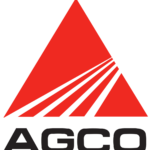 AGCO
AGCO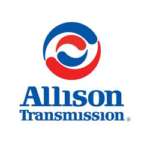 ALLISON
ALLISON BENDIX
BENDIX BOBCAT
BOBCAT CAT
CAT CLAAS
CLAAS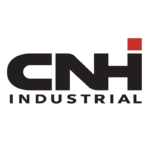 CNH
CNH DAF
DAF DETROIT
DETROIT EATON
EATON FREIGHTLINER
FREIGHTLINER HINO
HINO HITACHI
HITACHI ISUZU
ISUZU JCB
JCB JOHN DEERE
JOHN DEERE JPROZZ
JPROZZ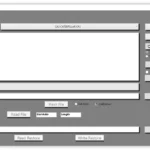 MAGIC TUNER
MAGIC TUNER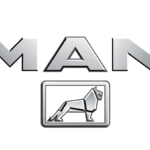 MAN
MAN Navistar
Navistar PACCAR
PACCAR PERKINS
PERKINS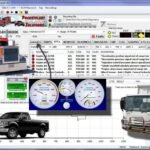 PF DIAGNOSE
PF DIAGNOSE PSI POWERLINK
PSI POWERLINK RENAULT
RENAULT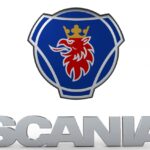 SCANIA
SCANIA THERMO KING
THERMO KING UD NISSAN
UD NISSAN VOLVO
VOLVO WABCO
WABCO ZF TESTMAN
ZF TESTMAN
 BELL
BELL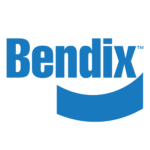 BENDIX
BENDIX BOBCAT
BOBCAT CARRIE
CARRIE DAF
DAF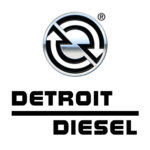 DETROIT
DETROIT EATON
EATON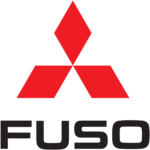 FUSO
FUSO MACK
MACK
 Cumminz
Cumminz ISB4.5 CM2150
ISB4.5 CM2150 All Engines (2017 Emissions)
All Engines (2017 Emissions) PACCAR
PACCAR![The DOOSAN EDIA TRUCK STANDART 2.4.0.7 [2023.06] , released in 2023, is a vital tool for diagnosing and maintaining heavy machinery. It offers advanced features crucial for optimizing operational efficiency and minimizing downtime. This software is designed to support various systems and provides real-time diagnostics for multiple types of equipment. Additionally, it includes remote installation support via TeamViewer to ensure a smooth setup process. The DOOSAN EDIA TRUCK STANDART 2.4.0.7 [2023.06] , released in 2023, is a vital tool for diagnosing and maintaining heavy machinery. It offers advanced features crucial for optimizing operational efficiency and minimizing downtime. This software is designed to support various systems and provides real-time diagnostics for multiple types of equipment. Additionally, it includes remote installation support via TeamViewer to ensure a smooth setup process.](https://ecmtrucks.com/wp-content/uploads/2024/08/4455.png)
![DOOSAN E-DOCTOR INDUSTRY STANDART 2.4.0.7 [2023.06]](https://ecmtrucks.com/wp-content/uploads/2024/08/55-1-150x150.png)
![DOOSAN EDIA BUS STANDART 2.4.0.7 [2023.06]](https://ecmtrucks.com/wp-content/uploads/2024/08/11-1-150x150.png)
